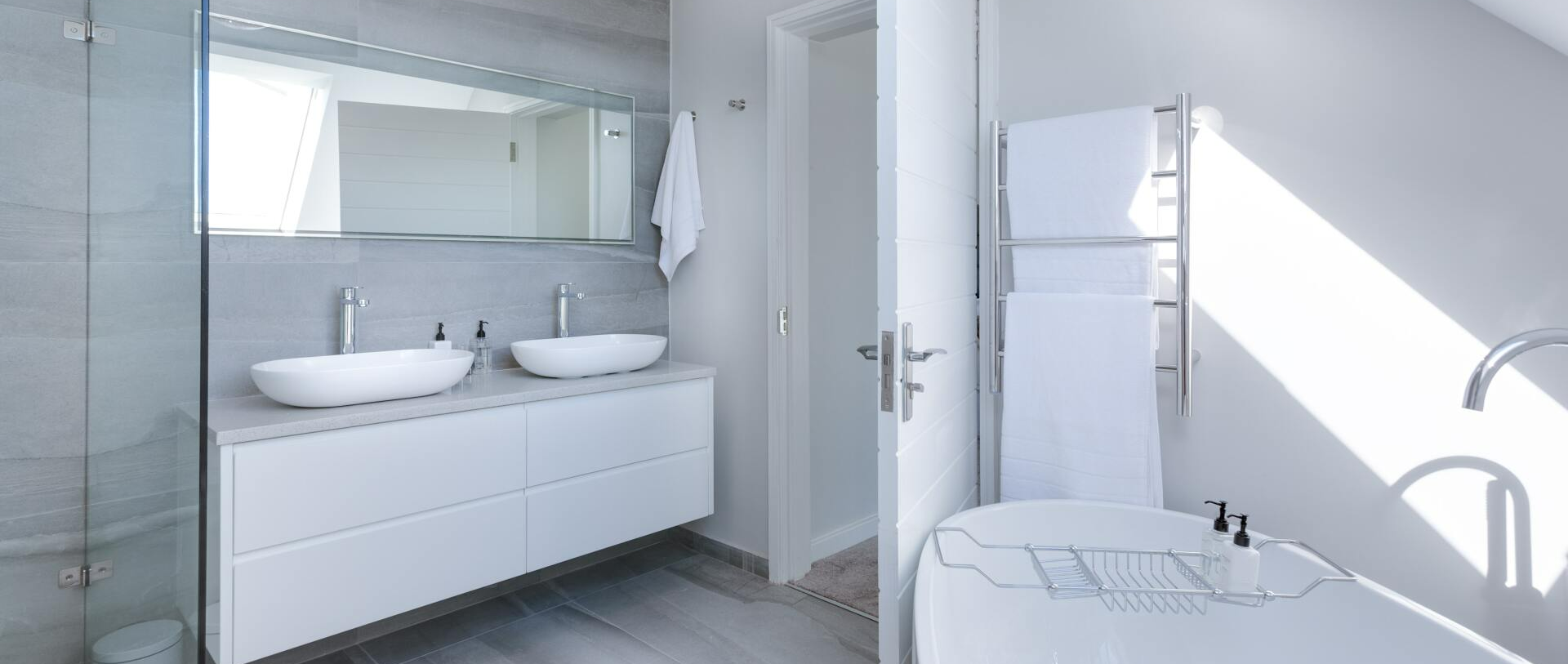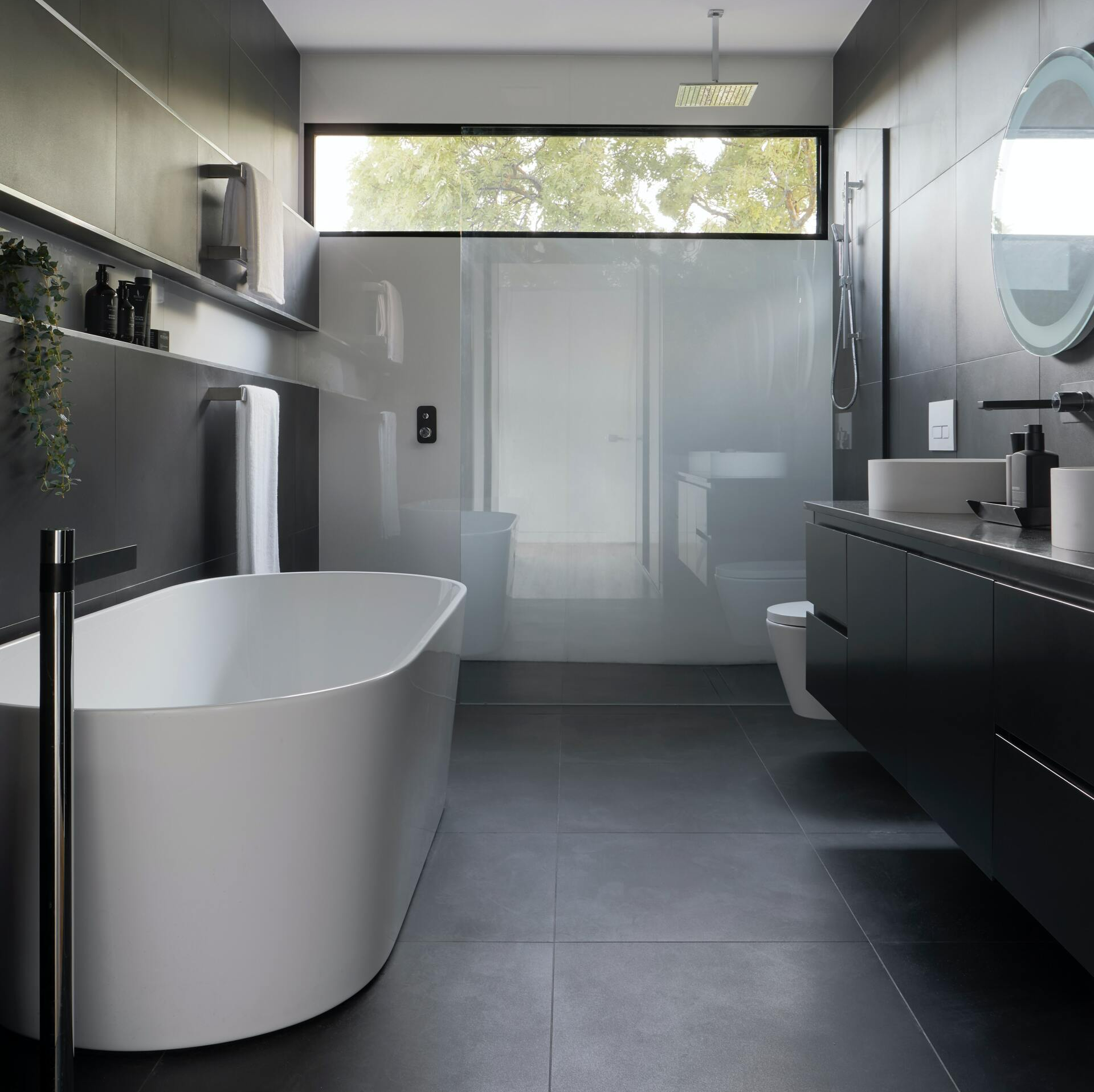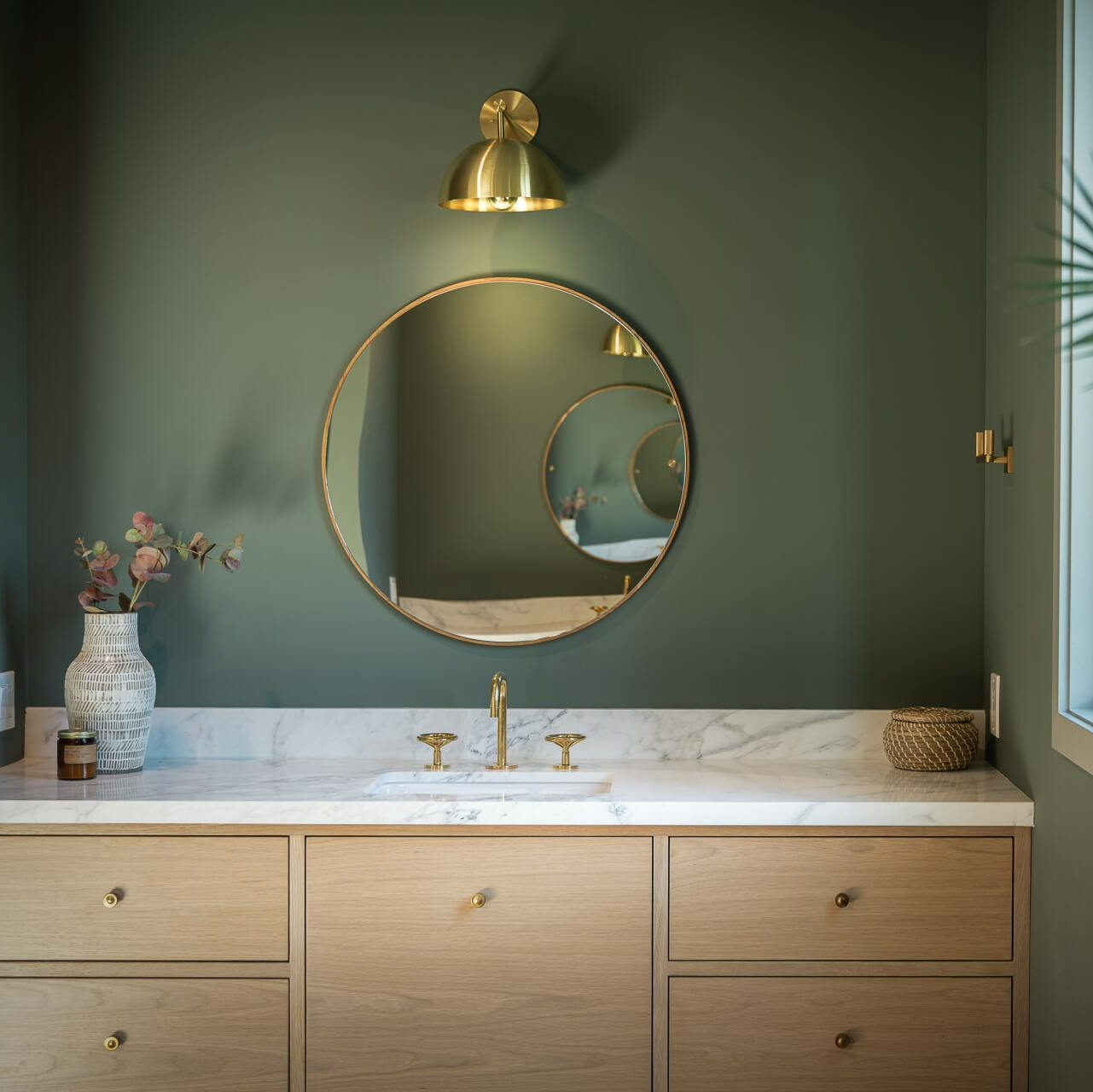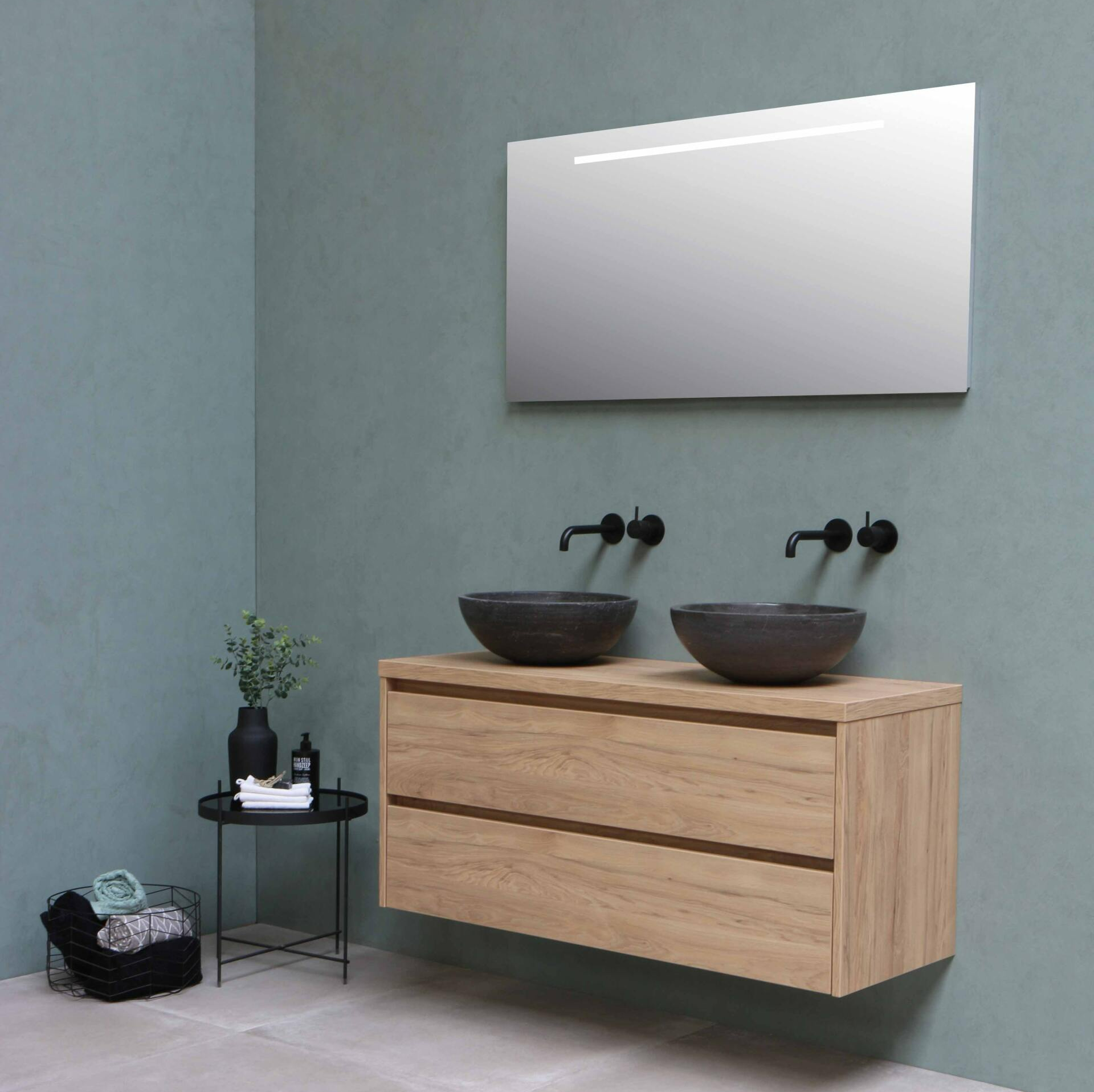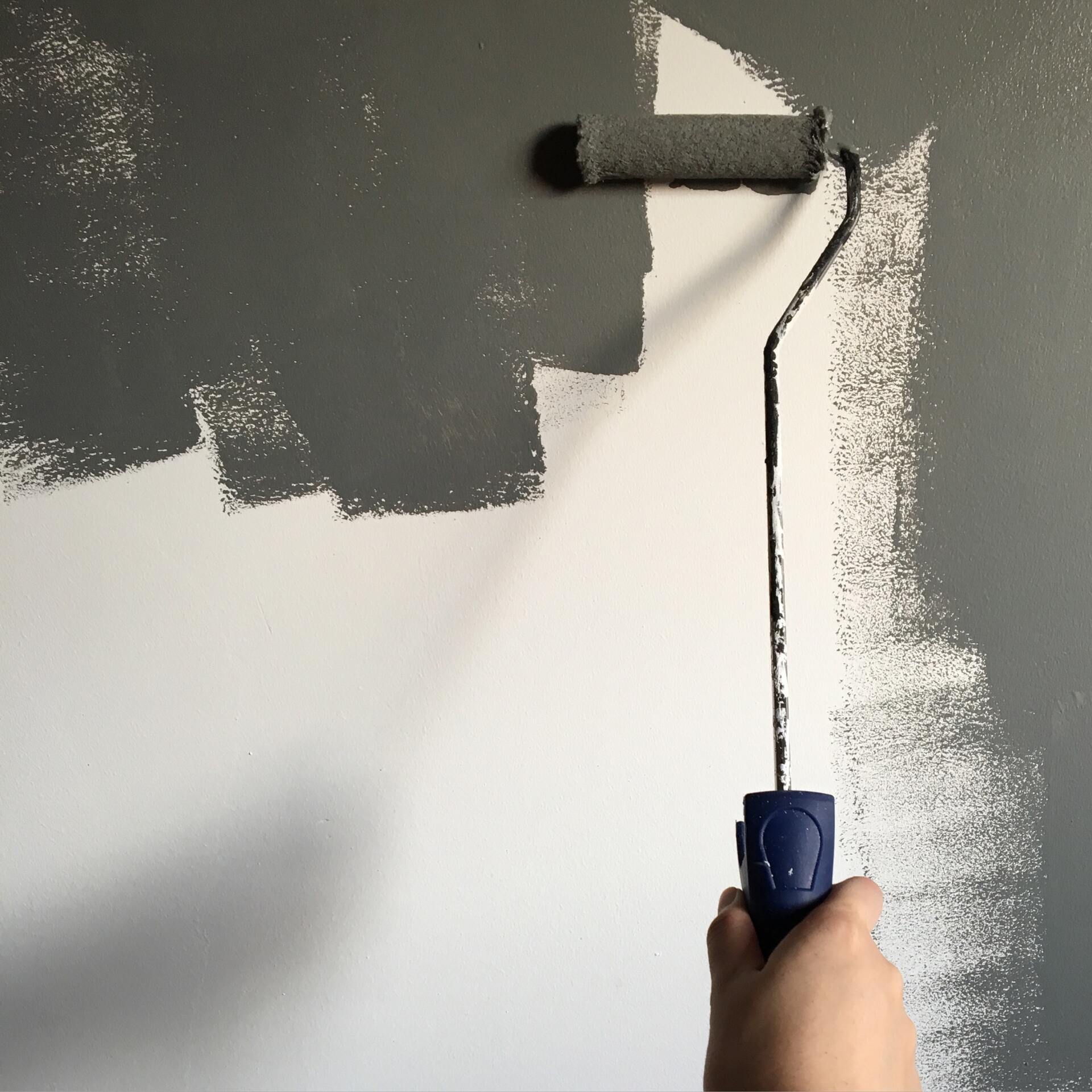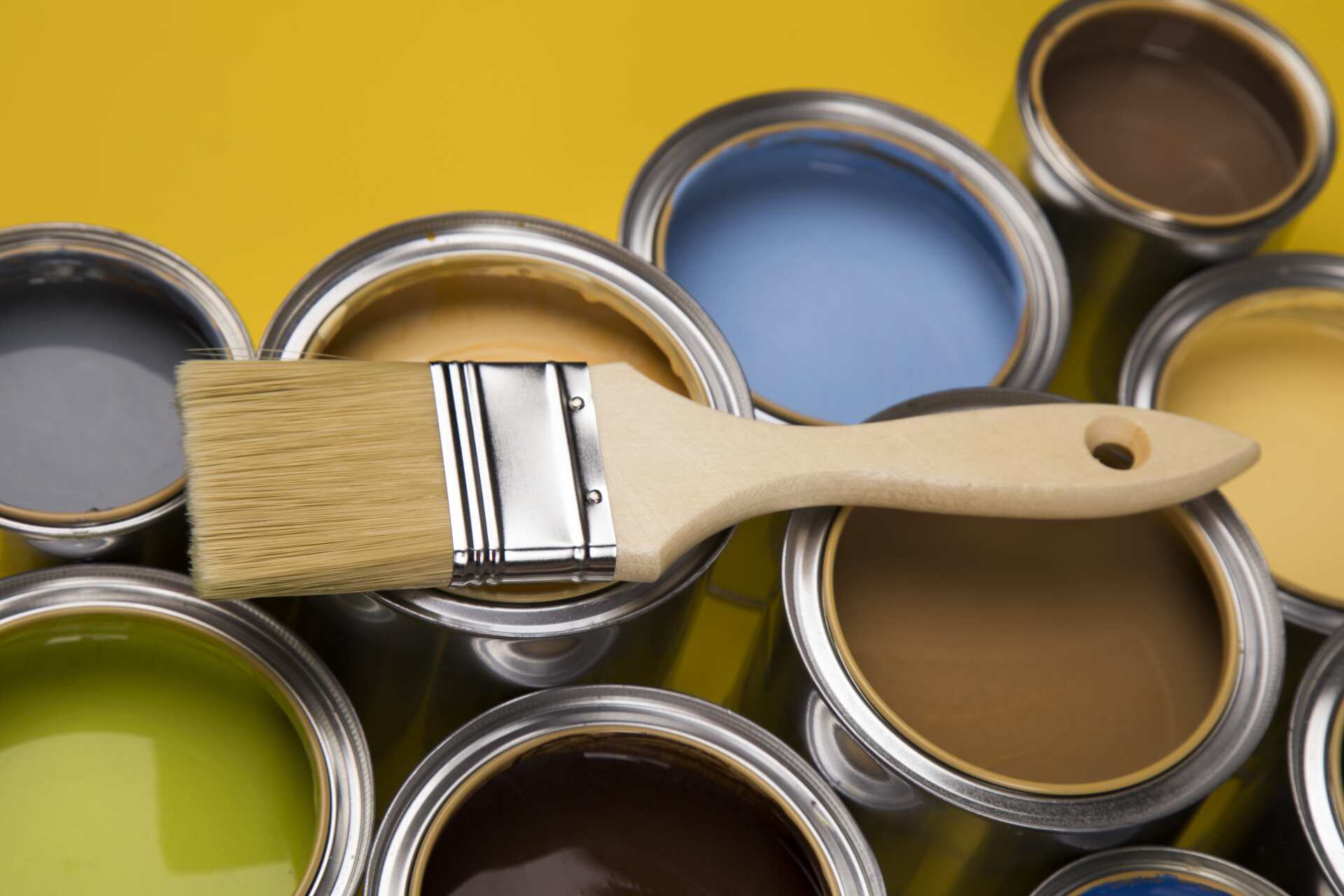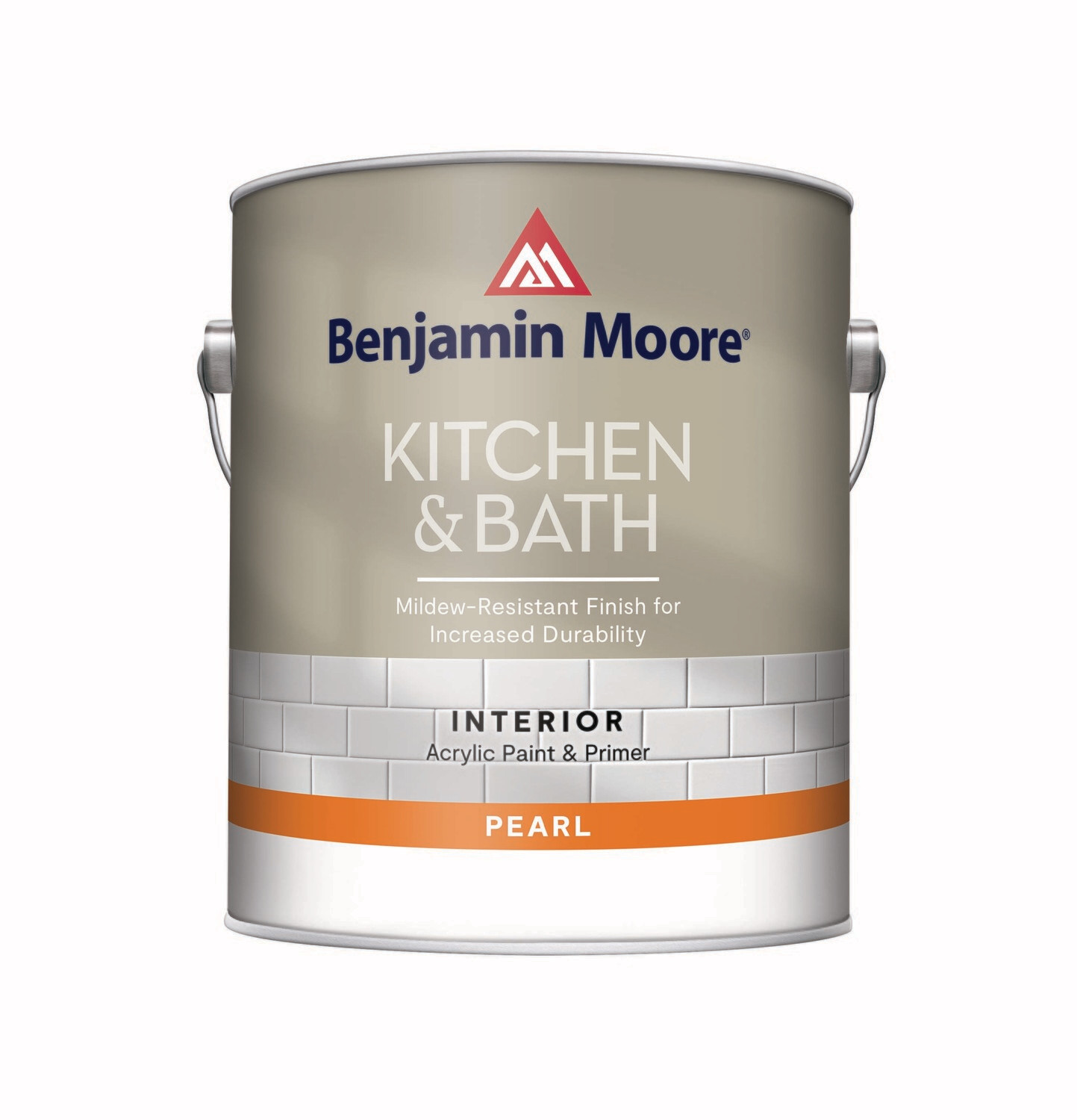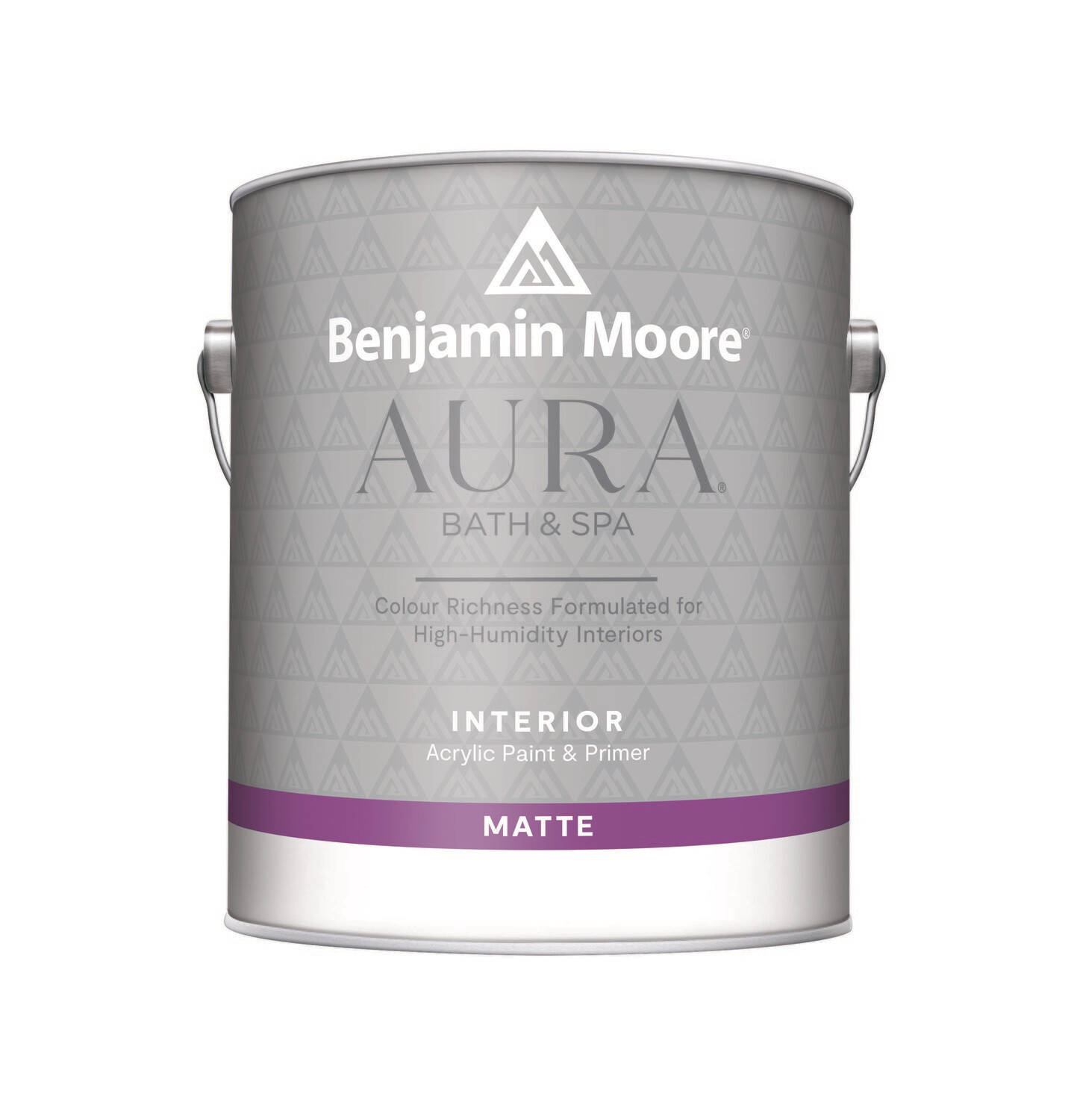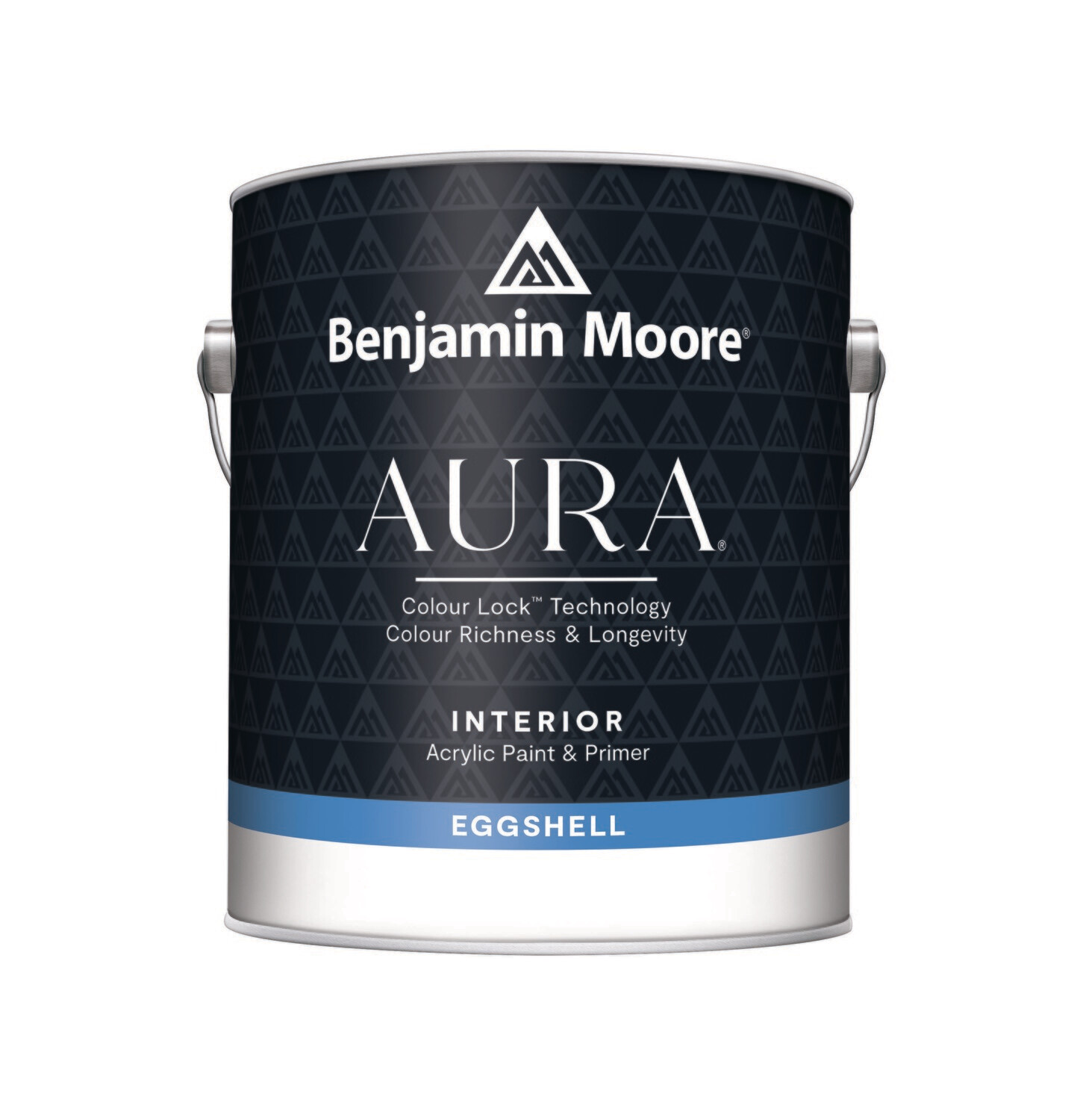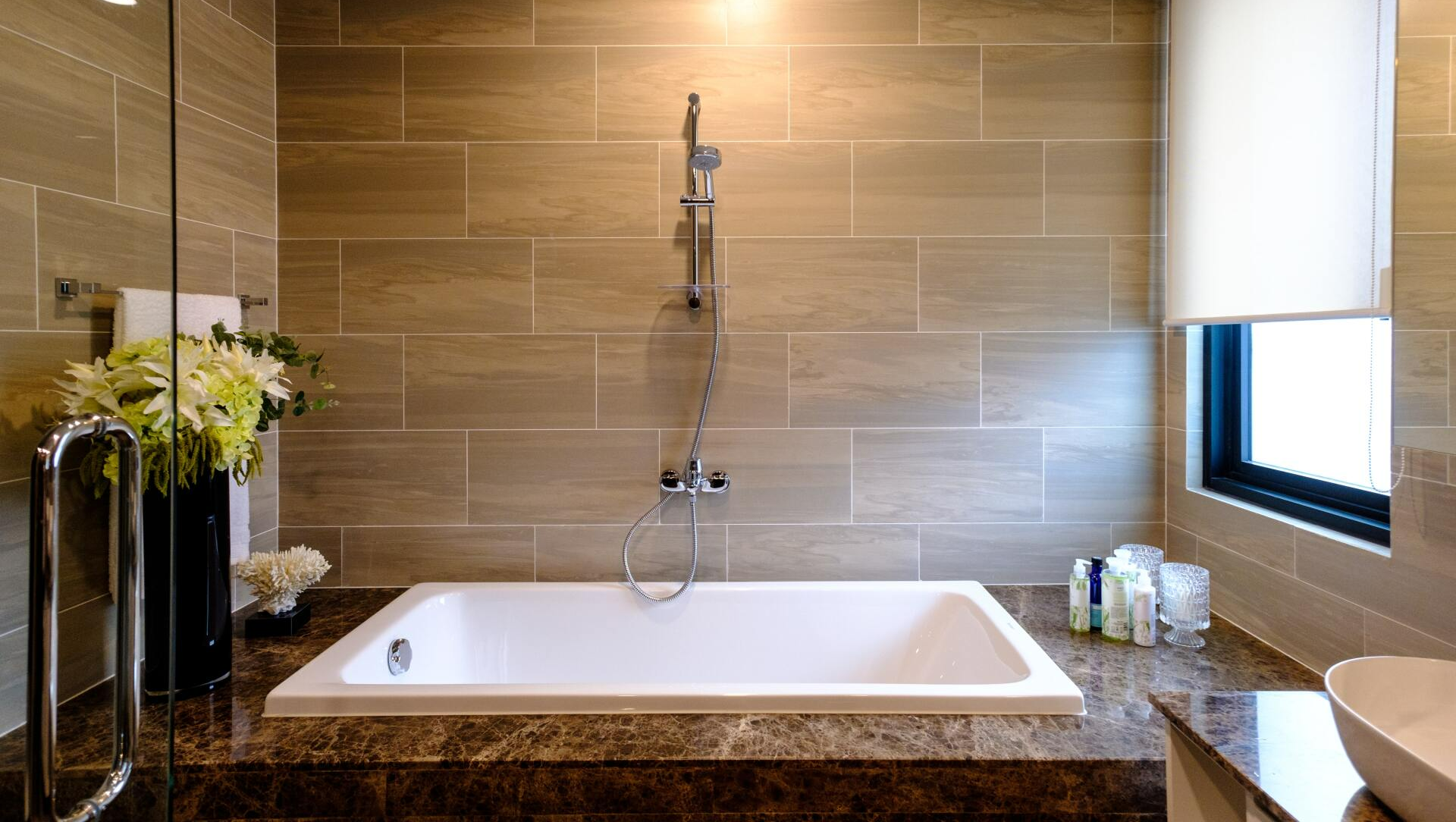Bathroom Paint Color Inspiration Ideas
The colors that you select for your walls will greatly impact the overall look and feel of your personal space. While this is true for every room, the bathroom can be significantly transformed by selecting the appropriate bathroom paint.
How do you go about selecting the right
Benjamin Moore bathroom
paint to convey the desired mood? Today, we’re going to guide you through various
Benjamin Moore bathroom paint colors to help you find some inspiration for your bathroom colors.
General Guidelines for Choosing Bathroom Paint Colours
You’ll save time and money by taking the time to consider all of your options before you start painting your bathroom. The last thing you want is to complete the entire bathroom and then realize that you’ve picked the wrong color, or that the colors you’ve picked don’t match as well as you thought.
There are a few telling characteristics of a bathroom that will help you pick your starting point.
A few of those characteristics are:
- Lighting: You absolutely must consider the bathroom’s lighting before you start painting the bathroom walls. The exact same color can look entirely different in natural light as opposed to artificial light. Before you paint, make sure that the color you’ve selected looks exactly as you’ve imagined.
- Flooring: Are you going to be changing the bathroom flooring along with your renovation? Or perhaps this is a new build and you’ll be selecting entirely new flooring. You must consider how any prospective colors will look with your final flooring. If you decide to go with a popular bathroom paint color, such as gray or white, they will match with most tile choices.
- Neutral colors, such as gray or white, will match with most colors. However, if your flooring is a non-traditional color, you may need to consult a color guide.
- Color Scheme: Your walls do not exist by themselves. Make sure that your bathroom paint ideas connect the overall color theme of the bathroom and your house. Take note of your cabinet color and any other focal points to make sure that you don’t pick a color that clashes.
Colors such as warm gray, beige, sage, navy blue, and blush are commonly picked colors when designing a bathroom. Plus, they go well with white cabinetry
Of course, you can always go for a classic
white bathroom. This is due to their ability to look great with a variety of other colors, allowing you to decorate the rest of your bathroom however you wish.
Types of Paint Finishes for Bathrooms
The biggest threat to bathroom paint is humidity. The moisture created in the bathroom, such as the steam from your shower, can get in between the wall and the coat of paint. If this happens, you may see an unwanted texture, peeling, or bubbling. Excessive humidity also creates an ideal environment for mildew.
What can you do to minimize the effects of bathroom humidity? Paint that has a glossy finish is highly moisture-resistance because once they’ve dried they form a hard coat that works to block water, causing it to drip to the floor instead of seeping into your wall. A high-gloss paint will feel almost like a dry erase board, which is great for defending against moisture. Paints that are
designed for high-humidity situations will help you get the longest life possible out of your paint.
If you’re going to use flat or matte finish paint, which can add soft dimensions to the bathroom, make sure that you select a low-sheen color. Some matte paints can still be damaged by humidity, so use caution when selecting your matte paint.
Avoid any products that are made for external use. These paints may be more waterproof than indoor paints, but exterior paints often contain chemicals that can be toxic when concentrated within your home.
How to Prepare Your Bathroom for Painting
You’ve picked out the right paint for your bathroom walls and you’re ready to get started. What exactly do you do? It’s time to go over the equipment you’ll need and give an overview of the entire process.
The exact equipment that you’ll need will likely vary based on your bathroom, but below is a good general list to get you started:
- 1 roll of painters tape
- 1 paint roller
- 1 roller cover
- Plastic sheeting (get more than you think you need)
- 1 2-inch sash brush
- 1 paint tray and liner
- 1 flathead screwdriver
- 1 Phillips screwdriver
How Much Paint Does a Bathroom Renovation Need?
This is an important question you’ll need to answer before starting your next bathroom renovation. Start by calculating the square footage of your room. Remember to calculate for the ceiling if you’ll be painting that. Generally speaking, one gallon of paint covers approximately 350 square feet. For example, if we have a 6’x6’ bathroom and we’re doing two coats of paint, we will only need one gallon of paint (144 square feet * 2).
What Are the Best Colours for Small Bathrooms?
How can you create a luxurious experience out of a small bathroom? Certain colors help create a more expansive feeling that makes the room seem bigger than it is. Some of the most popular colors to make the most out of a small bathroom are:
- Pale Blues
- Warm Neutrals
- Moody Greens
- Light Tones
- Earthy Yellows
Notice how each of these colors are toned down and a subtle version of the original color? These colors help create the illusion of a bigger space by optimizing the way light flows through your bathroom space.
Top Benjamin Moore Picks for Your Bathroom
You want the paint in your bathroom to last as long as possible while preventing mildew growth. Unfortunately, the frequent moisture found in bathrooms is perfect for mildew growth. The moisture can also cause paint to bubble and peel.
Below, we’ve handpicked a few of our paints that are specifically designed to prevent mildew and block moisture from reaching your walls:
- Aura Interior Bath and Spa: Much like our standard Aura Interior paint, this paint is also mildew resigned and designed to tolerate frequent scrubbing. The main difference is that this paint is designed for high-humidity environments, including spas, which are known for their humidity. That means it will certainly be able to handle the humidity created by your bathroom.
- Kitchen and Bath Interior: This line of paint was designed specifically to prevent the growth of mildew in any high-humidity situations. On most surfaces, it’s even completely self-priming. With thousands of colors available, this is a great option for any bathroom that needs a pearly shine.
- Aura Interior: Designed to provide everlasting color, our Aura Interior paint will keep your bathrooms free from mildew and looking fresh. This paint has exceptional durability against mildew. It can even stand up to frequent washing without losing color. Our Aura Interior paint is available in thousands of colors.
Each of the above lines of paint is available in thousands of colors, allowing you to fully customize the look and feel of your master bathroom. This means that any color you desire can safely be used in the bathroom.
-
Kitchen & Bath Interior
SKU K&BBuy NowC$99.19 C$123.99 -
Aura Bath & Spa
SKU AuraBSBuy NowC$98.99 C$124.99 -
Aura Interior
SKU AuraBuy NowC$98.99 C$124.99
Tips for Getting Started With Your Next Bathroom Renovation
- Carefully clean all surfaces that you’re going to paint: This is an absolutely crucial step when painting a bathroom because soap scum and other materials on your wall can cause issues with your paint in the future.
- Remove the toilet tank: Toilets typically come in two sections, the top tank and the bowl. The bowl is quite difficult to remove and we don’t need to worry about that. However, it’s almost impossible to paint behind the tank without removing it. Turn off the water supply at the shutoff valve located on the wall near the toilet, flush the toilet to empty the tank, and then remove the tank. Have a few towels on hand to clean up any spills.
- Remove any other obstructions: Bathrooms can have all kinds of other items on or near the walls that will need to be removed. Outlet plates, mirrors, towel racks, metal fixtures, and anything else that will be in the way needs to be removed.
- Cover areas you will not paint: Using your painters tape and plastic sheeting, cover everything that you’re not going to paint. This includes trim, backsplash areas, and sinks.
- Paint along the tape: Use your 2-inch sash brush to paint right near the painter’s tape in all areas. Make sure that you don’t make the paint too wet, otherwise it can cause drips.
- Paint the walls with the paint roller: Pour your paint into your paint tray, then run the paint roller through the tray, covering it in paint. Run the paint roller along the wall to apply the paint, returning to the paint tray whenever the paint runs out.
- Paint a second coat: After you’ve done one coat, wait a minimum of two hours to allow the paint to dry. It will take longer in wet or cool conditions. Once the paint has dried, repeat the painting steps for a second coat.
- Clean it all up: After the second coat has dried, remove the painter’s tape and plastic sheeting. Replace the toilet tank and anything else you had to remove.
Carefully Select Your Bathroom Colors
Take as much time as you need to pick your favorite bathroom color. Be sure to review the colors in the bathroom so that you know exactly how they look in real lighting before you start painting. Make sure that you have selected the correct paint finish that prevents moisture from reaching the walls underneath the paint.
The right color sets the pace for the rest of the decor, so carefully consider all of your options before you start painting. Before you know it, you’ll have a freshly painted bathroom.
Find the Perfect Color for Your Bathroom
Find a colour and finish that gives your bathroom the luxurious feel it deserves.
On-screen and printer colour representations may vary from actual paint colours.
All Rights Reserved | Benjamin Moore Retailer | In Partnership with CCC

